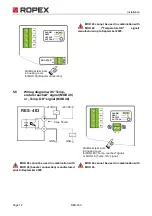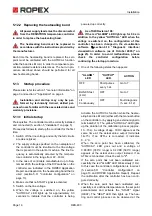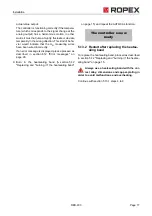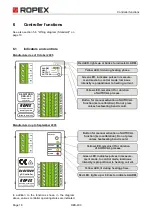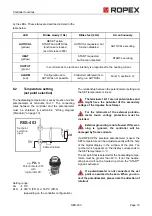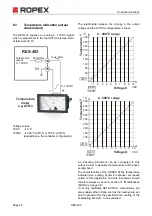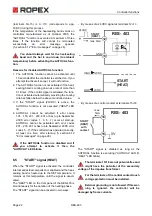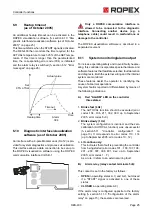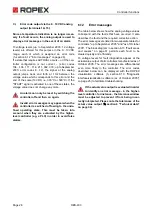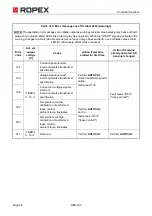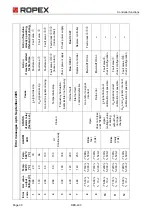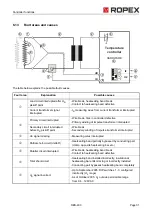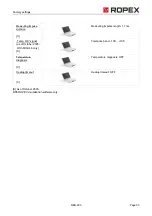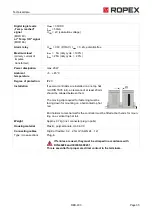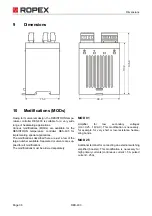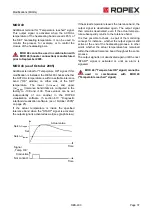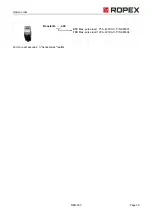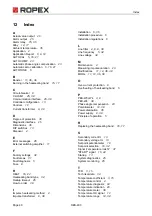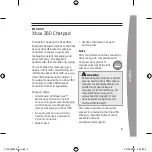
Controller functions
Page 26
RES-403
C.)
Error code output via the 0
…
10VDC analog
output (terminals 14+15):
Since a temperature indication is no longer neces-
sary if a fault occurs, the analog output is used to
display error messages in the event of an alarm.
13 voltage levels (up to September 2005: 12 voltage
levels) are offered for this purpose in the 0…10VDC
range, each of which is assigned an error code
(
ª
section 6.12 "Error messages" on page 26).
If a state that requires AUTOCAL occurs – or if the con-
troller configuration is not correct – (error codes
104…106, 111…114, 211, 302, 303; up to September
2005: error codes 8…12), the signal at the analog
output jumps back and forth at 1Hz between the
voltage value which corresponds to this error and the
end of the scale (10VDC, i.e. 300°C or 500°C). If the
"START" signal is activated in one of these states, the
voltage value does not change any more.
An alarm can only be reset by switching the
controller off and then on again.
Invalid error messages may appear when the
controller is switched off owing to the unde-
fined operating state. This must be taken into
account when they are evaluated by the higher-
level controller (e.g. a PLC) in order to avoid false
alarms.
6.12
Error messages
The table below shows how the analog voltage values
correspond with the faults that have occurred. It also
describes the fault and the required corrective action.
The error messages are listed in two separate tables for
controllers "up to September 2005" and "as of October
2005". The block diagram in section 6.13 "Fault areas
and causes" on page 31 permits each fault to be
cleared quickly and efficiently.
13 voltage levels for fault diagnostics appear at the
actual value output of all controllers manufactured as of
October 2005. The error messages are differentiated
even more finely in the controller. The error codes
described below can be displayed with the ROPEX
visualization software (
ª
section 6.10 "Diagnostic
interface/visualization software (as of October 2005)"
on page 25) to facilitate troubleshooting.
If the actual value output is evaluated in order
to identify an error message - in the higher-
level controller, for instance - the tolerance window
must be adjusted to prevent it from being incor-
rectly interpreted. Please note the tolerances of the
actual value output (
ª
section 8 "Technical data"
on page 34).
!
!
!

